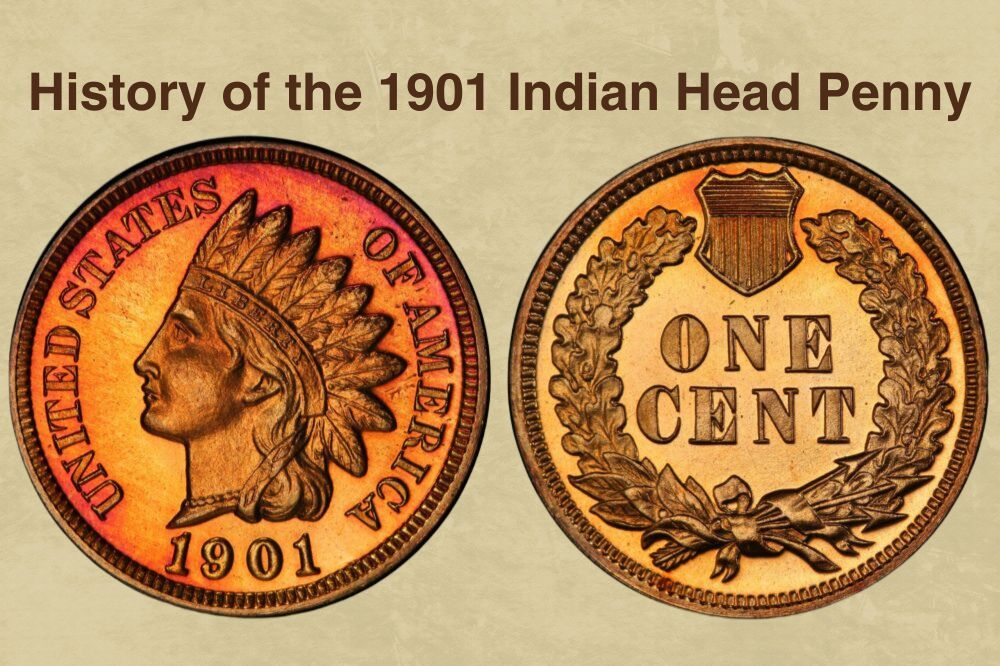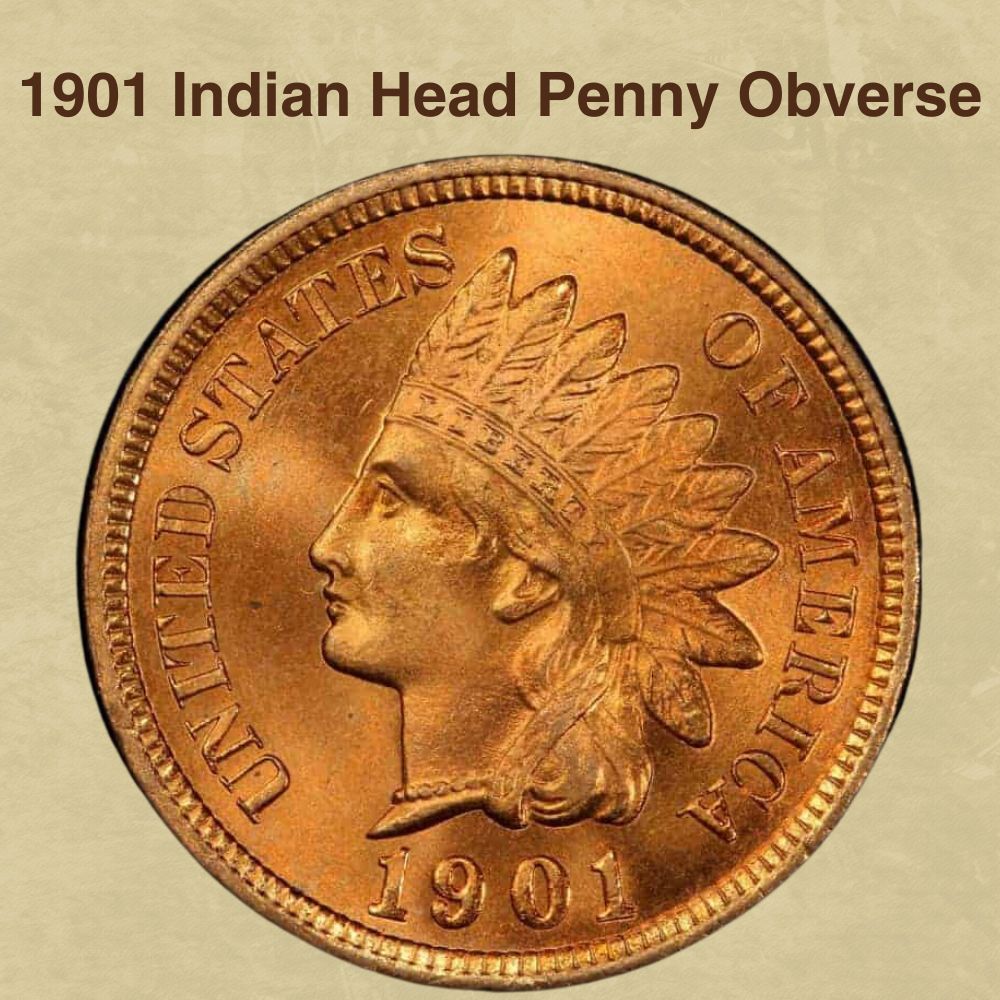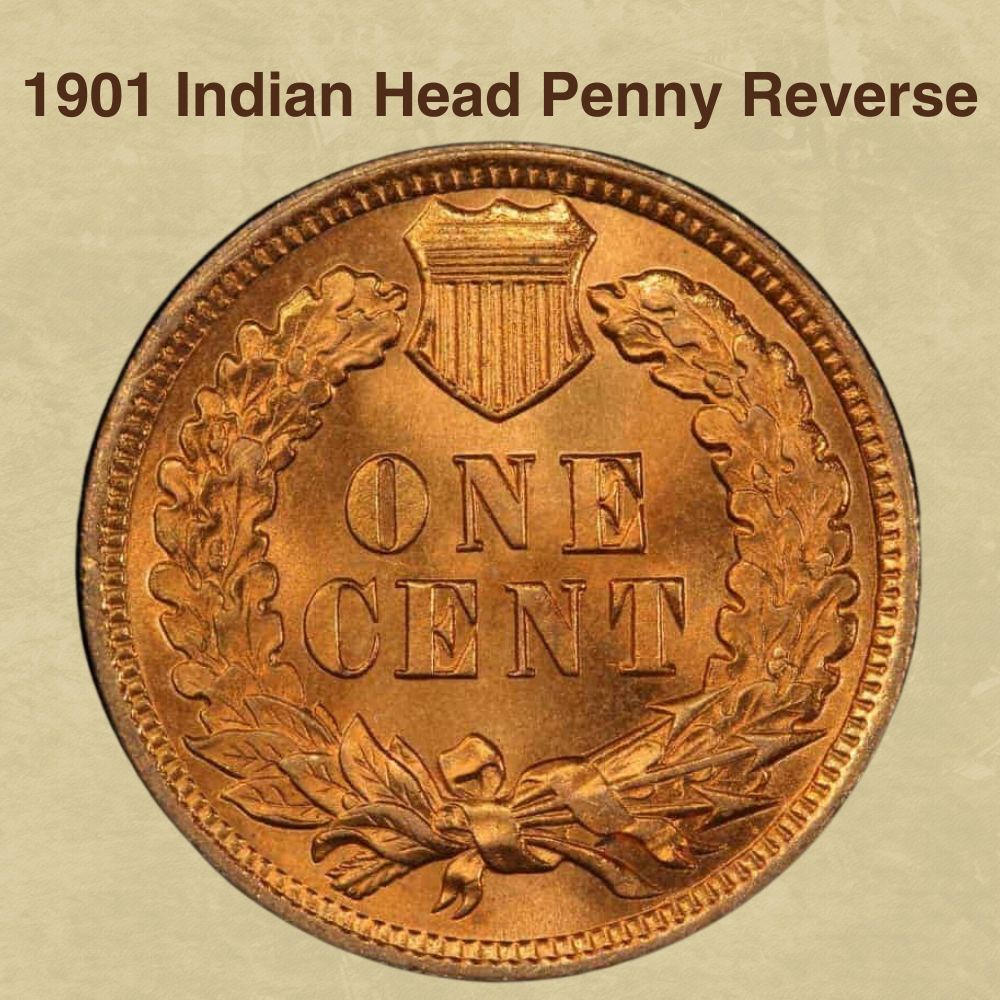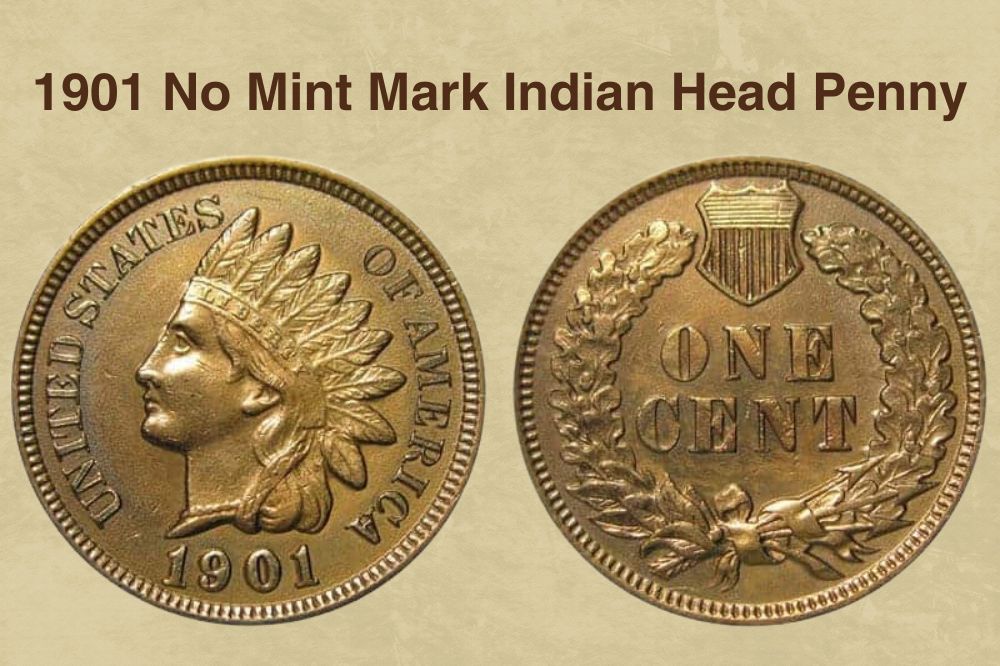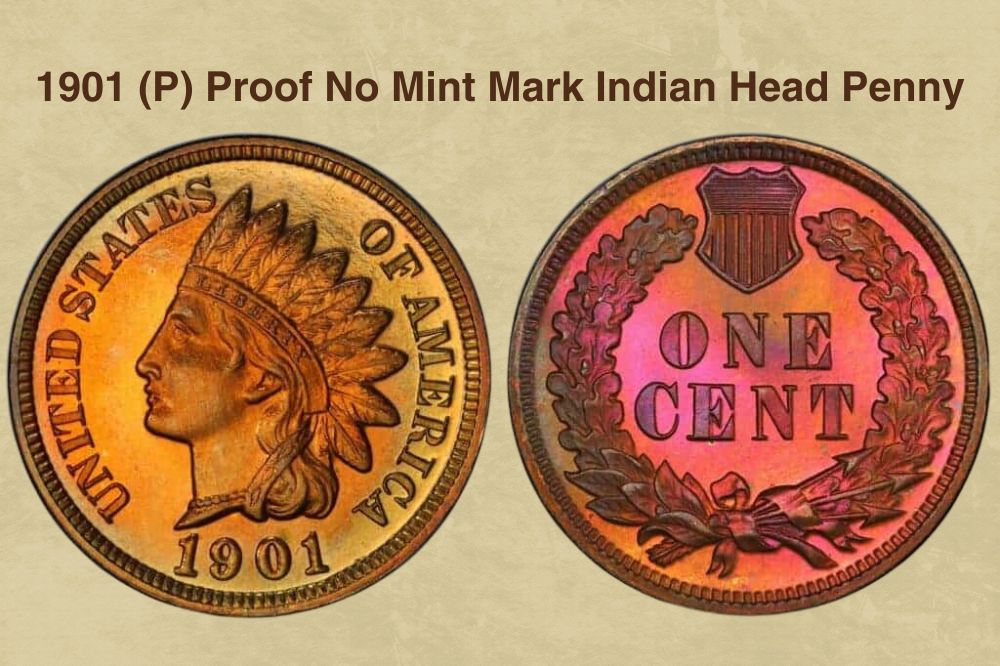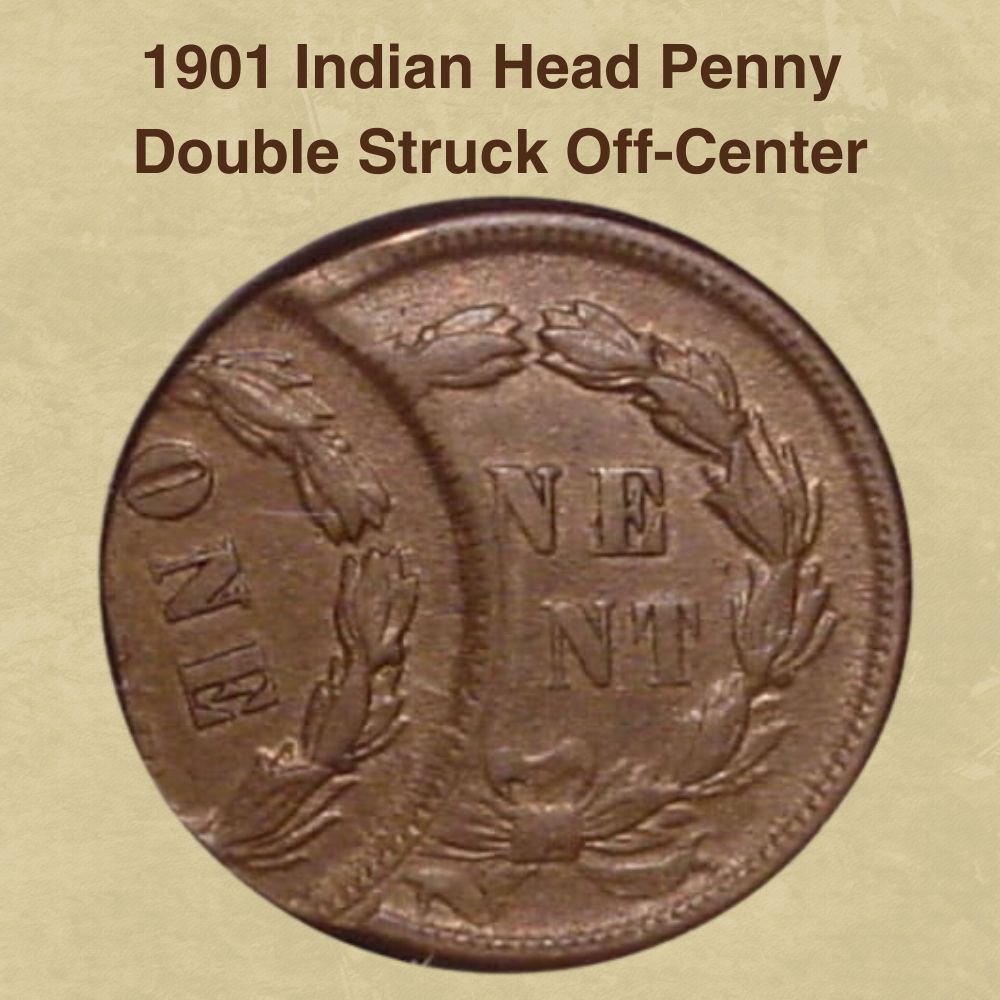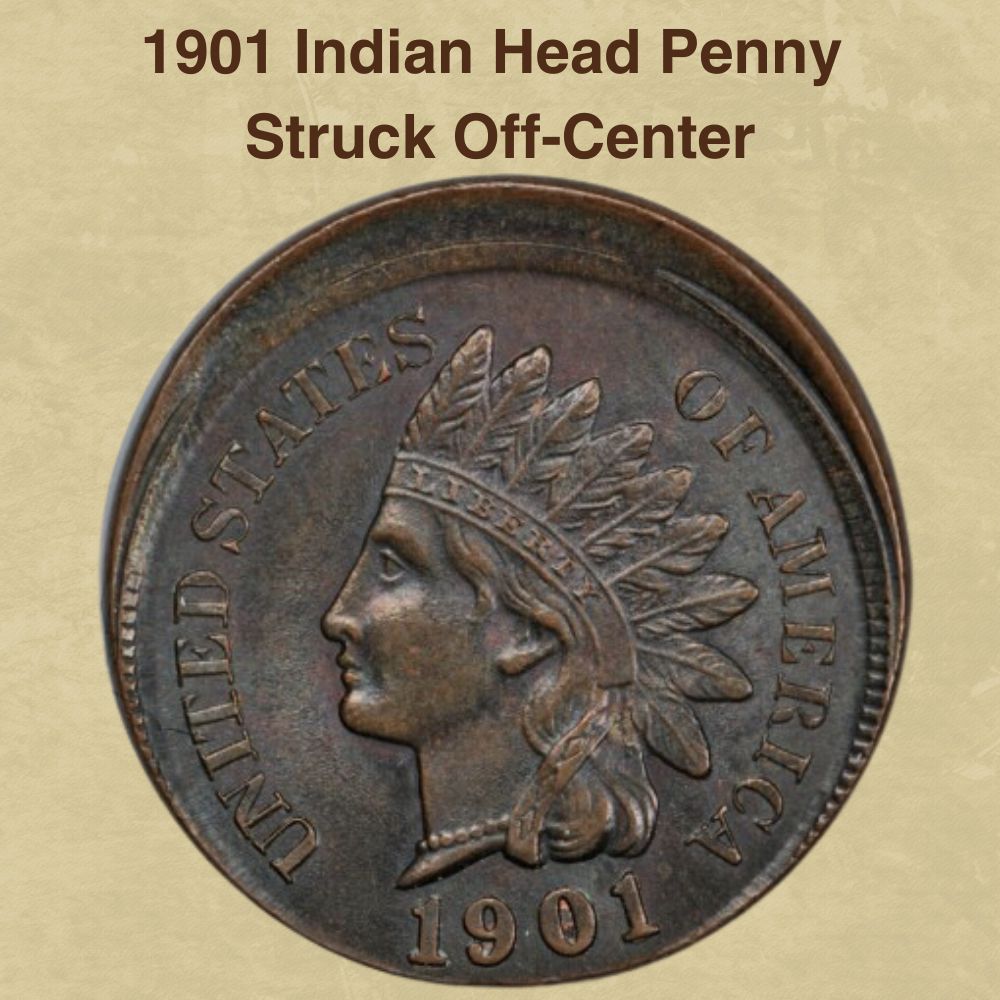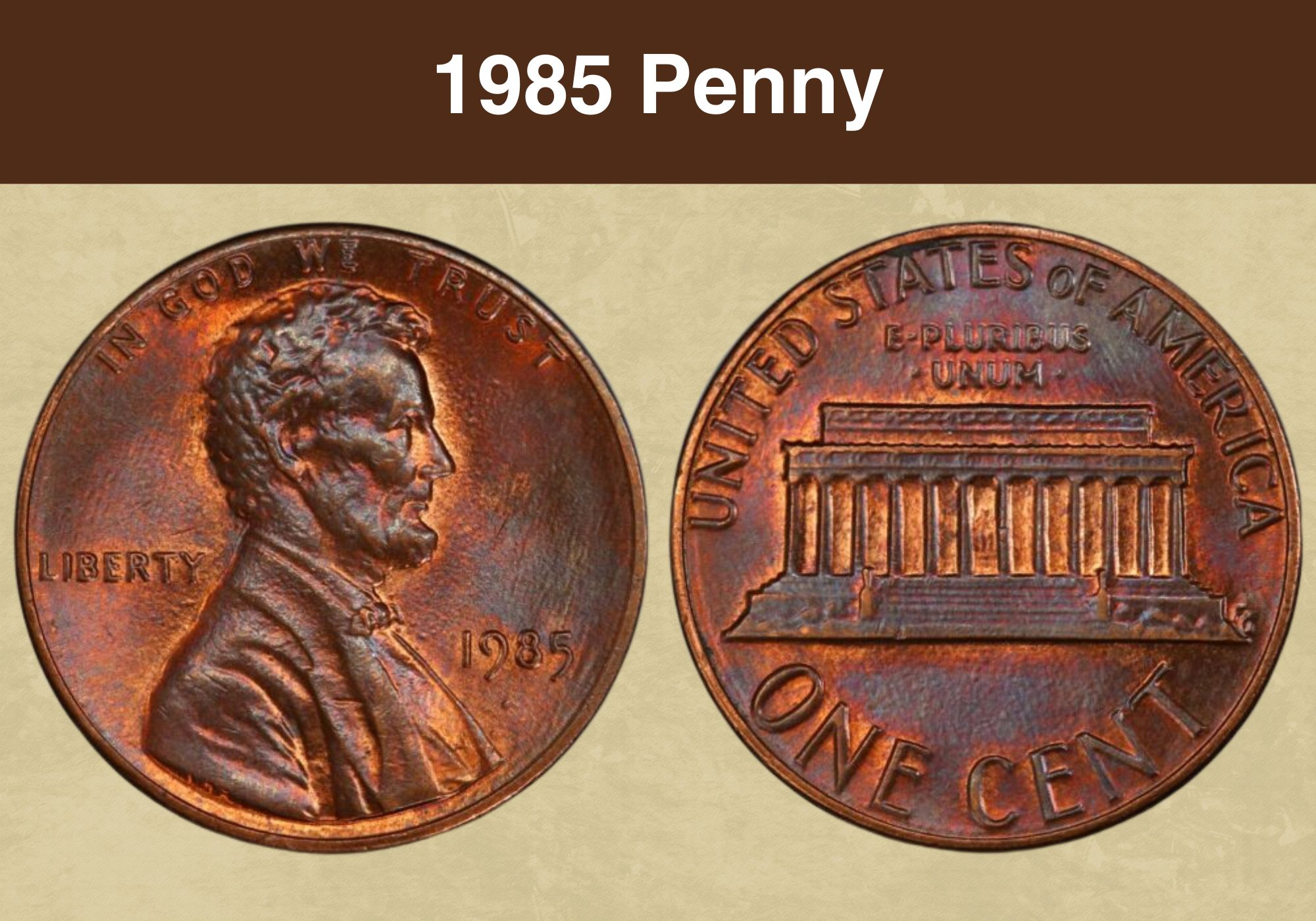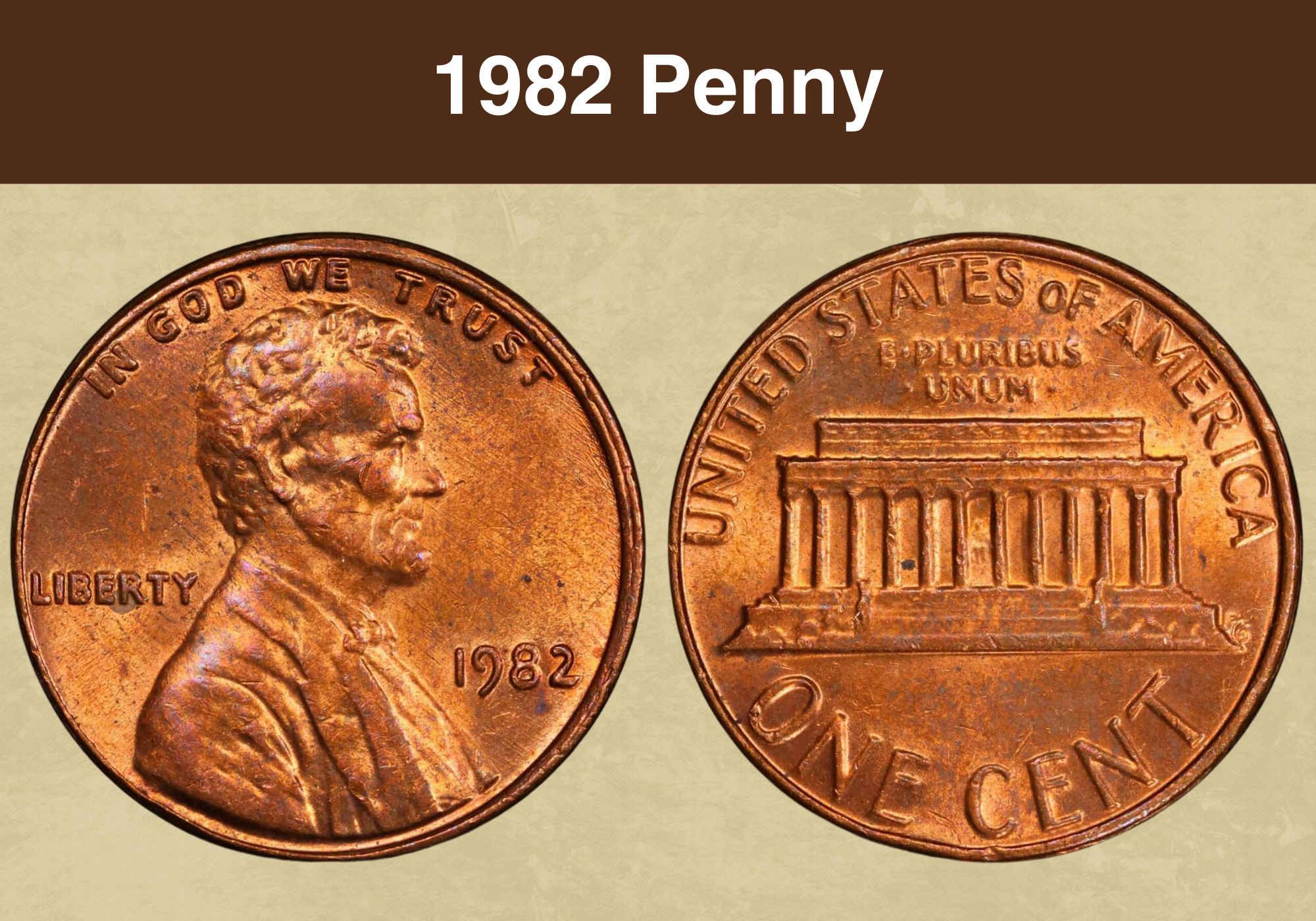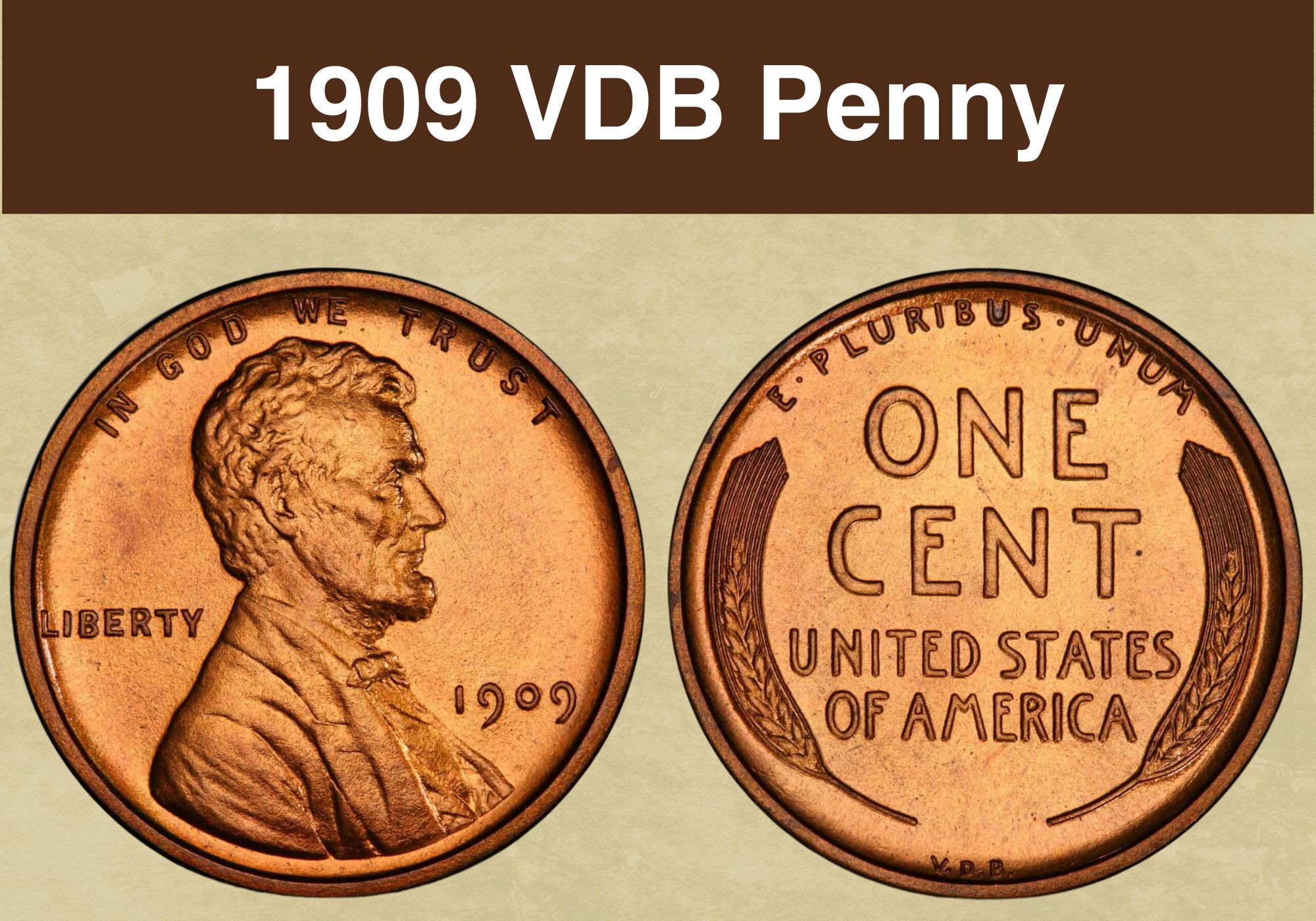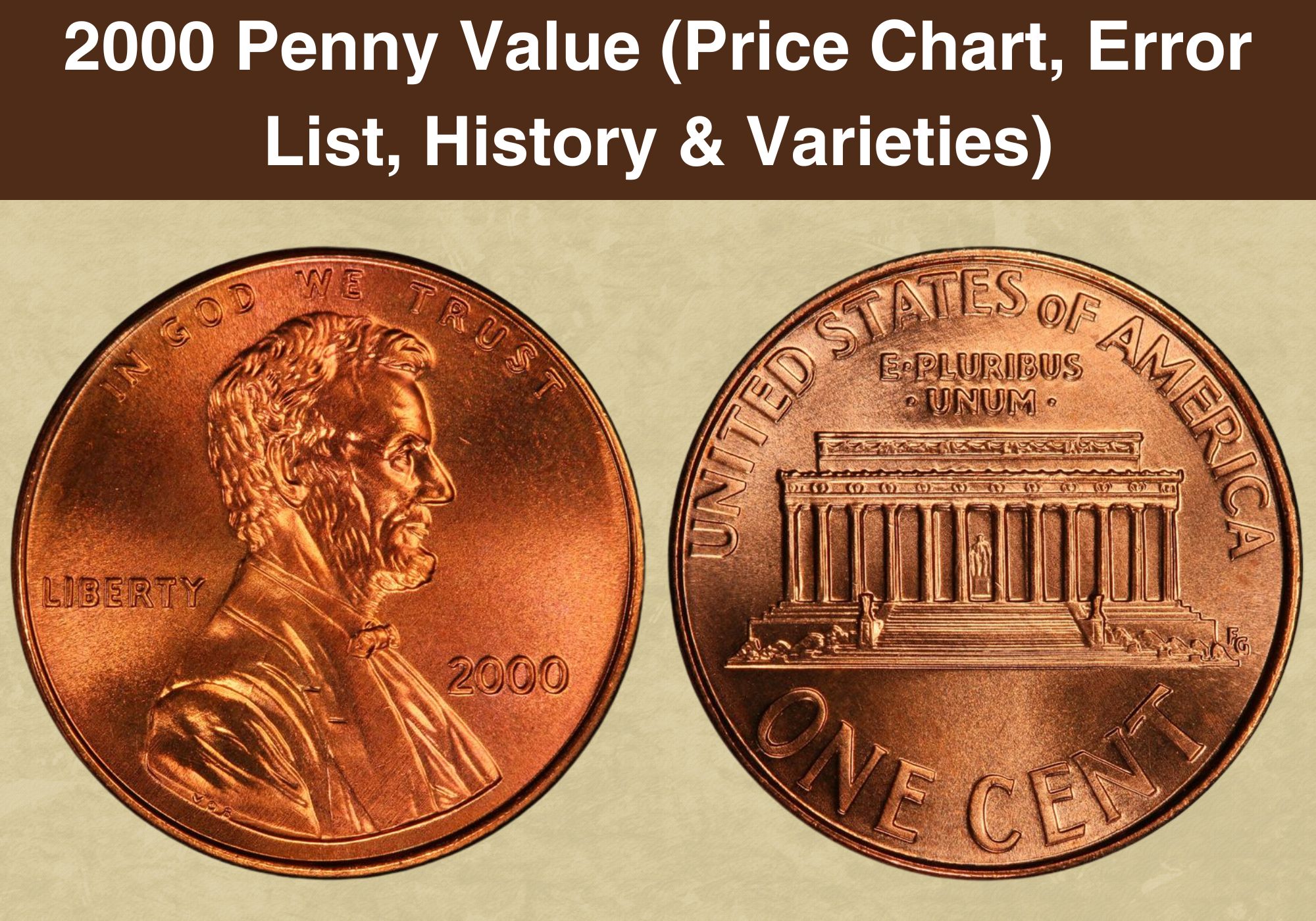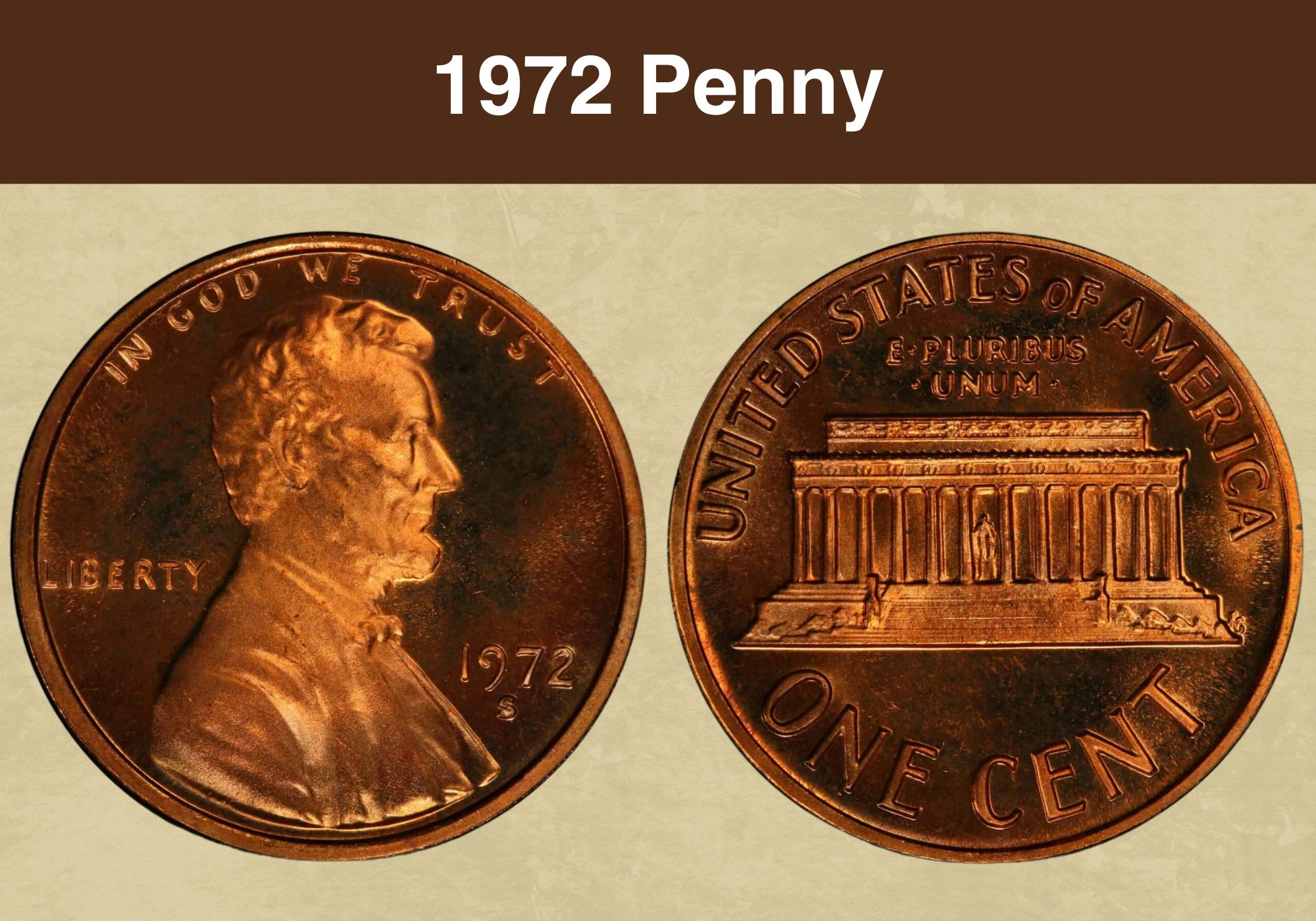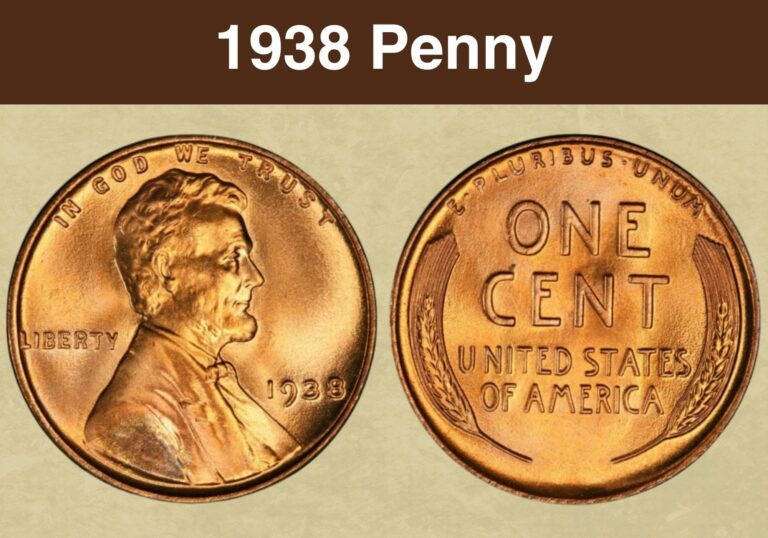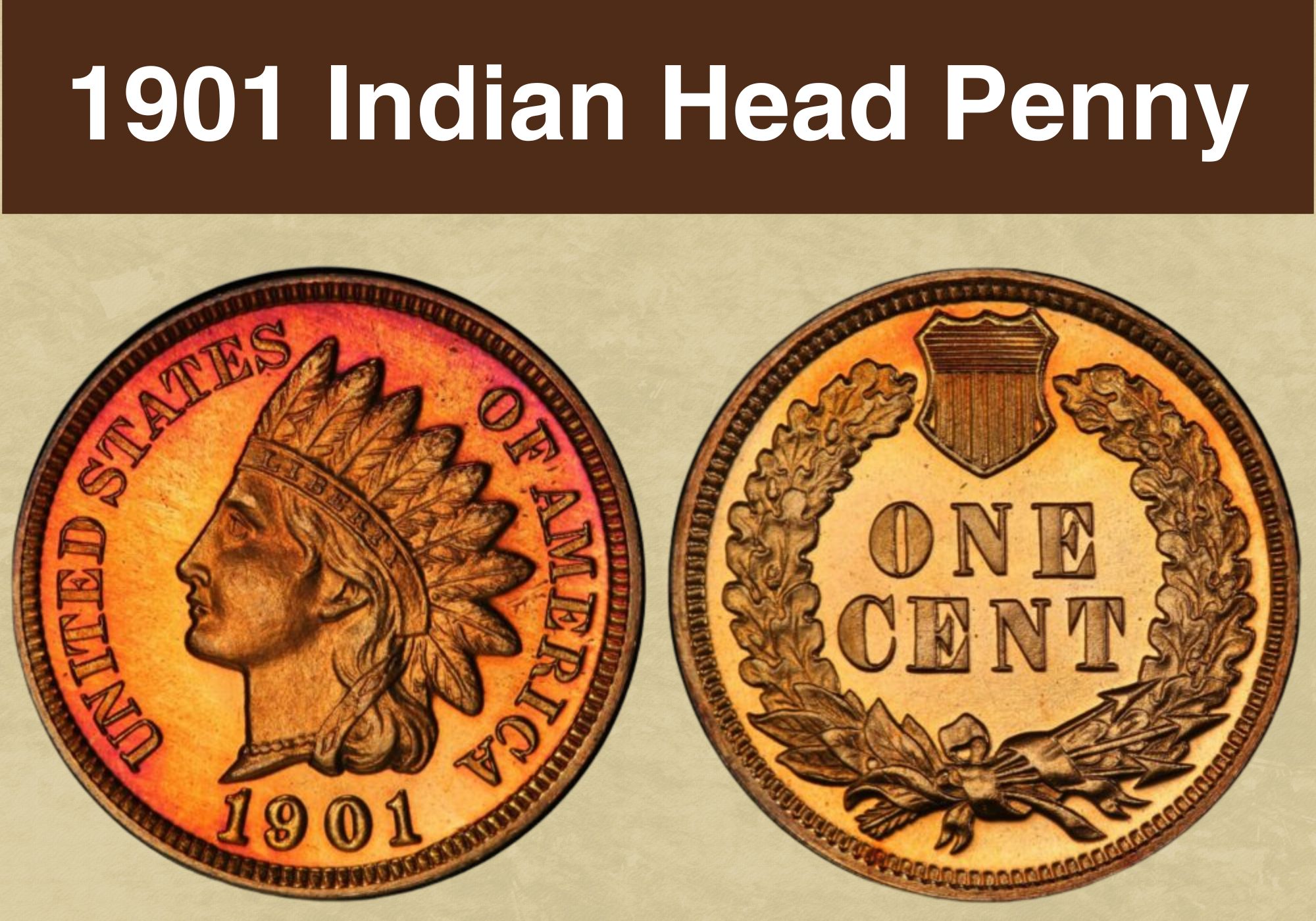
Coin Value Contents Table
- 1901 Indian Head Penny Value Chart
- History of the 1901 Indian Head Penny
- Features of the 1901 Indian Head Penny
- 1901 Indian Head Penny Grading
- 1901 Indian Head Penny Value Guides
- 1901 No Mint Mark Indian Head Penny Value
- 1901 (P) Proof No Mint Mark Indian Head Penny Value
- Rare 1901 Indian Head Penny Errors List
- Where to Sell Your 1901 Indian Head Penny ?
- 1901 Indian Head Penny FAQ
In 1901, the circulating 1c coin wore pearls and feathers. How odd! Today, we would call it a Native American Head Penny. But historically, people referred to it as the Indian Head Cent even though the portrait had distinctly Western features. We’ll learn how this all came about as we dig into the 1901 Indian Head Penny Value, assessing its backstory and its relevance.
1901 Indian Head Penny Value Chart |
||||||
| Coin | MS 60 | MS 62 | MS 65 | MS 66+ | MS 67+ | PR/PF 67+ CAM |
| 1901 Indian Head Penny | $60 | $100 | $700 | $2,650 | $30000 | – |
History of the 1901 Indian Head Penny
When the US Mint began, the Half Di(s)me, Dime, Quarter, and Half Dollar were silver. The $1 coin had both silver and gold versions. Precious metal coins had a little copper in them to ease the minting process, but pennies were pure copper. Then the 1850s gold rush raised copper prices as gold dropped. Soon the Civil War of the 1860s shot silver prices up as well.
In response, the mint added nickel to pennies in an 88% to 12% ratio. They also reduced the diameter of cents from 28.5mm to 19.05mm. This change came with the introduction of the newly designed Flying Eagle Cent. But people didn’t like it so we promptly switched to the Indian Head Cent aka the Indian Head Penny. This penny was minted from 1859 to 1909.
It was designed by Chief Mint Engraver James B. Longacre, and somewhere around 1864, he added his initial to the coin. This was probably the same period when the Indian Head Penny changed from 88% copper and 12% nickel to 95% copper with 5% tin and/or zinc since nickel was an important military metal. Longacre picked the Indian Head because it felt American.
The Inspiration for the Indian Head Penny
In his own words, the Native American headdress – which he called a feathered tiara – was a symbol of the nation’s identity. Earlier coins used the Phrygian cap as a sign of freedom, but Longacre felt the headdress represented America better than the so-called Liberty cap since it was initially a mark of bondage. (It was first worn by emancipated slaves in Ancient lands.)
Some found it odd to depict Lady Liberty wearing a man’s headgear, but she also had pearls around her neck, so her gender was clarified. She was sculpted with younger facial features and Longacre said he was inspired by the Crouching Venus statue, though some people said he had based her on his daughter Sarah at age 12. But she was already 30 and both denied it.
At first, Longacre designed the coin with a laurel wreath on the back, but he soon revamped it to add a shield and an oak wreath above the laurel branches. He also inserted a ribbon and three arrows among the laurel sprigs at the bottom. These stood for the first three states that joined the North American Union in 1787, namely, Delaware, Pennsylvania, and New Jersey.
Also read: 12 Most Valuable Lincoln Penny Worth Money
Features of the 1901 Indian Head Penny
While we refer to the coin as an Indian Head Penny, it’s actually a Caucasian woman in a Native American headdress. As for descriptive technical terms, the heads side is the obverse, the tails side is the reverse, the thin side is the edge, the raised border is the collar or rim, the words are mottos or legends, the images are devices, and the coin background is the field.
The Obverse of the 1901 Indian Head Penny
It shows a youthful Lady Liberty facing left with the words United States in front of her and Of America behind her. The headband on her feathered tiara says Liberty and the mint date is below her. There’s an L for Longacre hidden in her hair. It’s below the lowest feather on her headdress and it’s lying clockwise. She’s wearing a string of pearls and the coin has denticles.
The Reverse of the 1901 Indian Head Penny
It shows a wreath made of oak and laurel branches, with the laurel at the bottom. There’s a shield between the oak sprigs at the top of the wreath. The shield has both horizontal and vertical stripes. Meanwhile, the laurel leaves at the bottom have a ribbon tied around three arrows. The penny has denticles along its rim, and the middle of the coin reads One Cent.
Other Features of the 1901 Indian Head Penny
This is the second coin in the Small Cent series though it’s the fourth design tweak based on reverse images and metal composition. In 1901, the coin was 95% copper and 5% zinc or tin, sometimes both. The coin weighed 3.11g and was 19.05mm in diameter. The edge was plain or smooth (i.e. no reeds) but as we said above, the coin had denticles/beading along its rims.
Also read: 13 Most Valuable Wheat Penny Worth Money
1901 Indian Head Penny Grading
We’ve already talked about color grading for copper coins, and they do affect the value and resale price. But beyond the coin’s brightness and toning, 1901 Indian Head Pennies use the Sheldon Scale from Poor (PO 1) to Mint State (MS 70). Also, proof coins are graded PR by PCGS and PF by NGC. Proof coins that are Deep Cameo or Cameo are worth more as well.
| # | Grade |
|---|---|
| 1 | Basal State-1 |
| 2 | Fair |
| 3 | Very Fair |
| 4, 5, 6 | Good |
| 7, 8, 10 | Very Good |
| 12, 15 | Fine |
| 20, 30 | Very Fine |
| 40 | Extremely Fine |
| 50 | About Uncirculated |
| 60 | Mint State |
| 65 | Mint State |
| 70 | Mint State |
Please check our grading guides to know your coin scale, It’s the necessary step to know the exact value of your coin.
Check out now: How to Grade Indian Head Penny?
1901 Indian Head Penny Value Guides
In 1901, Indian Head Pennies were only minted in Philadelphia. That includes proof coins. Since they were mostly copper, the coins were further categorized into RD for red, RB for reddish-brown, and BN or BRN for brown. Red coins are the highest quality and therefore the most expensive. They made almost 80M Pennies in total. None of them had mint marks.
1901 No Mint Mark Indian Head Penny Value
The Philadelphia Mint made 79,609,158 Indian Head Pennies in 1901. They were business strikes for everyday use and none of them had mint marks. In February 2013, an AU 58+ BN sold for $1,404. Ten years later, it’s plummeted to $42 although PCGS has only ever received one for grading. That might be because an AU 58 is also worth $42 and PCGS has 80 of those.
But with 3 coins graded MS 66 BN, they’re worth $600 in August 2023. Meanwhile, an MS 67 BN sold for $2,185 in March 2004 and is now down to $1,850 since two more have shown up. Red coins do much better though. In January 2021, an MS 67+ RD sold for $33,600. It’s one of only two known coins and the sale is pretty recent so its pricing hasn’t changed much.
1901 (P) Proof No Mint Mark Indian Head Penny Value
You can usually spot a proof coin because its field is mirror-like while its device, numbers, and words are frosted. The mint achieves this by treating the dies and the blanks in specific ways. The die is scrubbed with horsehair to make it shiny, then the parts that are meant to be hazy are either pickled in acid or textured with a computerized laser to heighten the contrast.
On older coins, this contrast would diminish every time a die struck a blank, so the first 50 to 100 coins would be Deep Cameo and the next 100 or so would be Cameo. As for the blank, it gets burnished before it’s struck to ensure it’s extra shiny. They do this by tumbling blanks in a vat with 6mm stainless steel balls then rinsing off all residue before sending it to the press.
In 1901, the Philadelphia Mint made 1,985 Proof Pennies. These coins aren’t intended for circulation. Some go to the archives and the rest are sold to collectors for their display cases. In January 2020, a PR 67+ CAM sold for $49,938. It’s the highest known grade and only one exists so its value is rounded up to $50,000 in August 2023. But a PR 66 CAM is $12,500.
Looking at lower color grades, a PR 66 BN was $3,220 in August 2006 and is worth $1,050 today since PCGS has received 11 of them. A PR 67 BN is $2,150 and a PR 67+ RB sold for $9,988 in August 2012. It’s down to $550 today because PCGS received two more coins in that grade. But a PR 68 RD was $17,250 in September 2006 and a PR 67+ is now $15,000.
Also read: 17 Most Valuable Indian Head Penny Worth Money
Rare 1901 Indian Head Penny Errors List
Even a well-oiled machine like the US Mint can make occasional mistakes. And these mint errors can shoot the price of a coin to astronomical levels. The coin flaws range from mixed-up planchets (i.e. the blank discs that later become coins) to accidentally stamping a design on a stray metal fragment. Of course, some errors are more valuable so let’s check them out!
1901 Indian Head Penny Broadstruck Error
The rim of a coin – which we defined earlier – helps it keep shape and maintain consistent face value. It’s either formed using a detachable three-piece collar mold or an upsetting machine. But sometimes, the rim gets messed so it ends up being flatter and thinner. That’s called a broadstrike, and even in a low grade like VG 10 BN, you can still earn $50 from it.
1901 Indian Head Penny Curved Clip
The planchet enters the mint as a coiled metal sheet, is flattened in a blanking machine, then punched into discs of the right size. The leftover metal is full of holes, and if a coin is struck on one of those remnants, it may have curved clips next to the holes. It’s not an especially expensive error but it’s still worth a few dollars. Even after cleaning, this coin sold for $50.
1901 Indian Head Penny Double Struck Off-Center
To make a coin, the feeder finger pushes it between two dies for striking. But sometimes, the blank isn’t exactly in the middle. Other times, it starts to exit the press then gets struck again. Both can cause off-center errors, sometimes with overlapping images if the second strike is on another spot. This AU 53 BN had both an off-center and a double strike, so it was $745.
1901 Indian Head Penny Double Struck in Collar
This is another example of a double-struck coin. But this time, the coin was almost out of the mint so only its collar got restruck. That said, the Indian Head Penny is a coin with a beaded rim so you can clearly see any overlap on the pattern. As for the device, you can spot a slight doubling on her profile and the date if you use a coin microscope. In F 15, it’s worth $180.
1901 Indian Head Penny Repunched Date
On some coins, you’ll get a special type of doubling called RPD, which stands for repunched date. If you look closely at the mintage year – particularly with a jeweler’s loupe or a coin microscope – you may see traces of overlap around or inside the individual numbers. That happens when the coin shifts between strikes. An AU 50 RPD sold for $150 on eBay in 2016.
1901 Indian Head Penny Struck Off-Center
When a coin is double or triple-struck, it might lose shape by pushing some of the metal out of the collar. On the other hand, if the blank shifts before the first strike, then only part of its surface will catch the imprint. The rest of the coin will have an empty surface. That scenario played out on these pennies. An AU 55 was $180, AU 58 was $285, and MS 64 BN was $515.
Also read: 11 Most Valuable Wheat Penny Errors
Where to Sell Your 1901 Indian Head Penny ?
Now that you know the value of your coins, do you know where to sell those coins online easily? Don’t worry, I’ve compiled a list of these sites, including their introduction, pros, and cons.
Check out now: Best Places To Sell Coins Online (Pros & Cons)
1901 Indian Head Penny FAQ
What is the Error on the 1901 Indian Head Penny?
The 1901 Indian Head Penny has a well-known error designated FS 301. The FS here means First Strike, and it refers to mint mistakes that were discovered and formally verified within 30 days of the coin’s original release. The 1901 Indian Head Penny FS 301 error is an RPD or re-punched date. This doubling shows up as a shadow-like overlap effect on the mint date.

